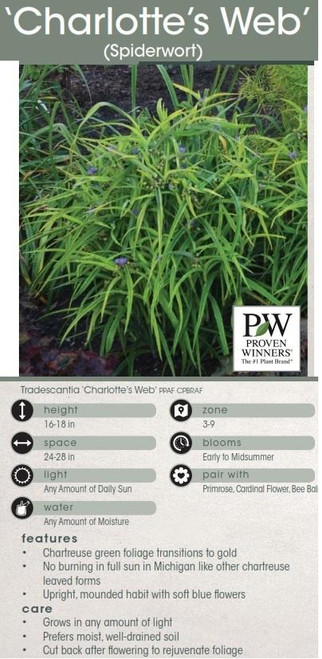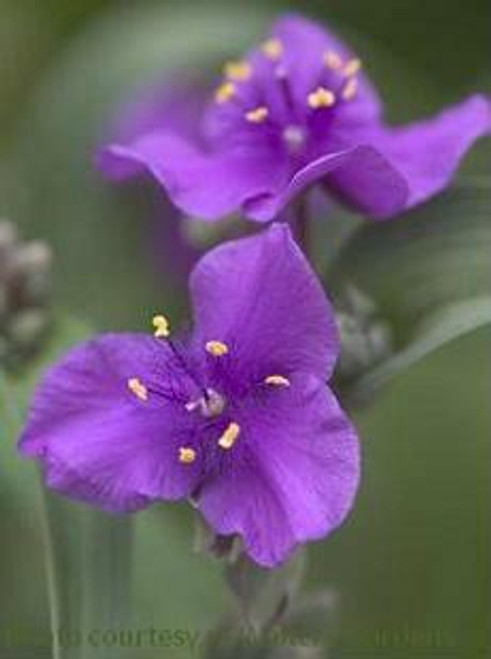Product Description
Tradescantia 'Charlotte's Web' PPAF - Proven Winners
Common Name: Spiderwort.
Native cultivar, a gold foliage Spiderwort that doesn’t burn in sun!
Its grass-like leaves emerge in spring with a thin red margin on the edges of each leaf blade. The chartreuse foliage transitions to gold with more sun exposure. Small, three-petaled soft blue flowers cover the arching, bushy clumping habit. Like most Tradescantia of its type, flowers will open in the morning and close in the afternoon on sunny days. They may remain open on cloudy days. This easy care perennial is an excellent choice for gardeners looking for low maintenance or native perennials.
Height: 16.0-18.0 Inches
Spread: 24.0-28.0 Inches
Hardiness Zones: 3 - 9
Flower Color: Blue shades
Foliage Color: Yellow shades
Full Sun to Full Shade
Average to Consistent Water Needs
Average to Fertile Soil
Bloomtime: Early Summer to Midsummer
Attracts Butterflies
Border Plant, Container, Mass Planting
Other Details
The most important part of the plant is its root system. Healthy roots are the foundation of a healthy, vibrant plant. The type of plug container used is based on the specific needs of the plants. Perennials offered as bare root traditionally perform better when planted as bare root.Planted in a specialized mix, potted plants have well established root systems. Top growth stage will vary depending on the current life cycle and time of year when shipped. In Winter and early Spring dormant plants may be shipped. Dormant plants may be planted right away, even before the last frost date.
Most bare root varieties are field grown for at least one season, though Hemerocallis and Hosta are grown for two seasons. The bulk of the soil is removed during the harvesting process and the tops of most varieties are trimmed back to the crown. They are graded, packed in shredded aspen or sphagnum moss and stored in freezers until ready to be shipped.
See our Container Sizes and Bare Root Perennials pages for more information.
Plant information and care is provided in the Overview section, Plant Genus Page and general information is provided in the Planting Care & Guides. Additional questions can be asked on each Plant page.
Plant Spacing: Using the maximum mature spread or width of a plant to guide spacing, ensures space to grow to full size. To fill an area sooner, plant them closer together. Just remember, future thinning or transplanting may be needed.
Water: Keep a close eye on newly planted perennials, especially throughout the first growing year. Most early plant loss is due to too much or too little water!















